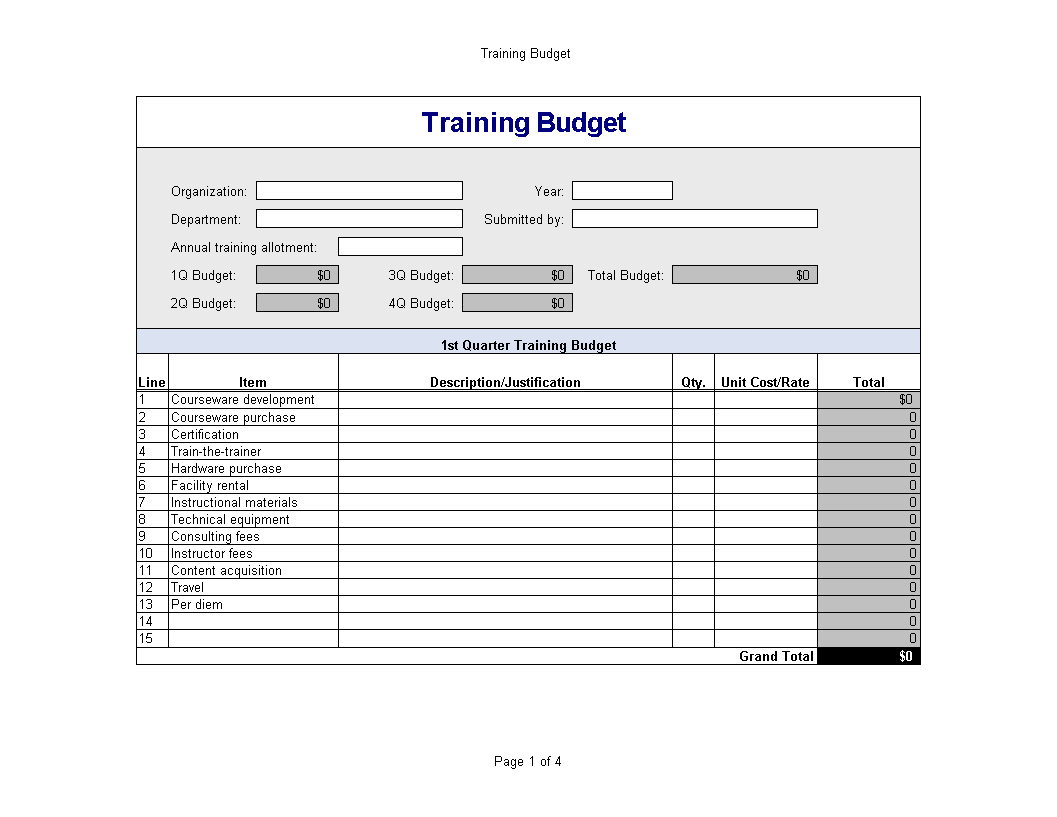Training is an essential component of employee development and organizational growth. However, it can be challenging for organizations to effectively plan and control training costs. This is where a training budget comes into play. A training budget helps organizations allocate resources for employee development and measure the return on investment (ROI) of their training initiatives.
In this article, we will explore what a training budget is, why it is important, how to create one, and provide tips for successful implementation.
What is a Training Budget?
A training budget is a document that outlines the financial resources allocated for employee training and development. It helps organizations plan and control training costs by providing a clear overview of the funds available for various training initiatives.
This budget serves as a roadmap for organizations to ensure that they are investing their resources wisely and in alignment with their strategic goals.

Why is a Training Budget Important?
A training budget is important for several reasons:
- Cost Control: By having a clear budget in place, organizations can control their training costs and avoid overspending.
- Resource Allocation: A training budget helps organizations allocate resources effectively, ensuring that the right amount of funds is available for employee development.
- ROI Measurement: With a training budget, organizations can measure the return on investment (ROI) of their training initiatives, helping them determine the effectiveness of their training programs.
- Strategic Planning: A training budget enables organizations to align their training initiatives with their strategic goals, ensuring that training efforts contribute to overall organizational success.
How to Create a Training Budget
Creating a training budget involves several steps:
1. Identify Training Needs
Before creating a training budget, it is important to identify the training needs of your organization. Conduct a thorough analysis to determine the skills and competencies that employees need to develop to achieve organizational goals.
2. Determine Available Resources
Next, assess the financial resources available for training. This includes considering the budget allocated specifically for training as well as any additional funds that can be allocated from other areas of the organization.
3. Allocate Funds
Based on the identified training needs and available resources, allocate funds for different training initiatives. This may include instructor-led training, online courses, workshops, conferences, and more.
4. Monitor and Adjust
Regularly monitor the utilization of the training budget and make adjustments as needed. This may involve reallocating funds from underutilized training programs to more impactful initiatives.
Examples




Tips for Successful Implementation of a Training Budget
Implementing a training budget effectively requires careful planning and execution. Here are some tips to ensure success:
- Align with Organizational Goals: Ensure that the training initiatives included in the budget are aligned with the overall goals and objectives of the organization.
- Regularly Review and Update: Review and update the training budget regularly to reflect changing organizational needs and priorities.
- Consider Different Training Methods: Explore various training methods, such as e-learning, on-the-job training, and coaching, to optimize the use of resources.
- Track and Measure ROI: Implement mechanisms to track and measure the ROI of training initiatives, such as evaluating employee performance and conducting post-training assessments.
- Involve Stakeholders: Engage key stakeholders, such as managers and employees, in the budgeting process to ensure buy-in and support for training initiatives.
- Seek Feedback: Regularly gather feedback from participants to continuously improve the effectiveness of training programs and the budget allocation process.
- Explore External Funding: Consider exploring external funding opportunities, such as grants or partnerships, to supplement the training budget.
- Continuously Learn and Adapt: Stay updated with industry trends and best practices in training budgeting to continuously improve and adapt your approach.
Conclusion
A training budget is a valuable tool for organizations to plan, control, and measure the costs and effectiveness of their training initiatives. By allocating resources strategically and aligning training efforts with organizational goals, organizations can maximize the impact of their training programs and ensure employee development and organizational growth.
Implementing a training budget requires careful planning, regular monitoring, and the involvement of key stakeholders. By following best practices and continuously adapting, organizations can create a culture of learning and development that drives success.
Training Budget Template – Download